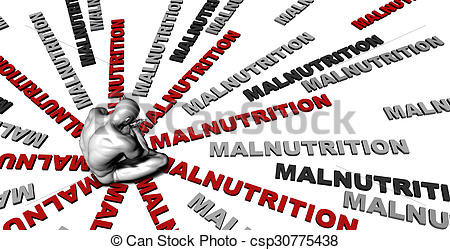Healthy food
Healthy food is one of the important health standards that must be obtained from the moment the embryo is in the womb of the mother and through the stages of childhood and adolescence and beyond, with what is fit to his sex and health status and the nature of his work. And these foundations are the basis on which UNICEF to determine the basics of good nutrition Which include the appropriate and balanced amounts of essential elements proteins, fats, carbohydrates, vitamins, minerals and water as well as appropriate supplementary food with the choice of the appropriate food quality of each element of the essential nutrients so as not to result in problems In nutrition. In this article we will identify the concept of malnutrition.
What is malnutrition?

Malnutrition is the opposite effect of abstinence or avoidance of all or part of healthy food ingredients due to multiple causes, and it is one of the commonly used medical and nutritional terms, and the degree of malnutrition among the individual is in between simple and severe, which causes significant health damage. This phenomenon is growing in developing countries and poor communities where economic resources are lacking and medical and health care is absent from pregnancy, breastfeeding and beyond.
The most vulnerable classes to malnutrition
Lack of an individual’s access to balanced food or one of its components as a result of lack of income or of diseases that impede the absorption of these elements or following an unhealthy diet, make the individual susceptible to poor nutrition; but there are groups that are most vulnerable to it, and they are:

- Children and adolescents of growing age for their great need for healthy food, to build the body and muscles, and the proper growth of their mind and organs.
- Mothers in pregnancy and breastfeeding, and embryos by providing healthy food and safe supplements for the safety of the mother and her health during pregnancy and breastfeeding, as well as providing the required amount of food and vitamins for the fetus from the beginning of the formation until birth, to protect him from the incidence of congenital malformations, and in the period of lactation, relying on breastfeeding as the best for the health of the child from other ways.
- Older people As a result of aging, the cells lose their ability to absorb some of the nutrients such as iron and calcium. It is necessary to adopt a diet that compensates for these elements and others to avoid the disadvantages of under nutrition.
- Patients, whether chronic or transient disease, it is associated with the disease loss of appetite and unwillingness to eat many foods or the incidence of poor absorption of food, especially with regard to diseases of the digestive system or as a side effect of some medications and treatments.



